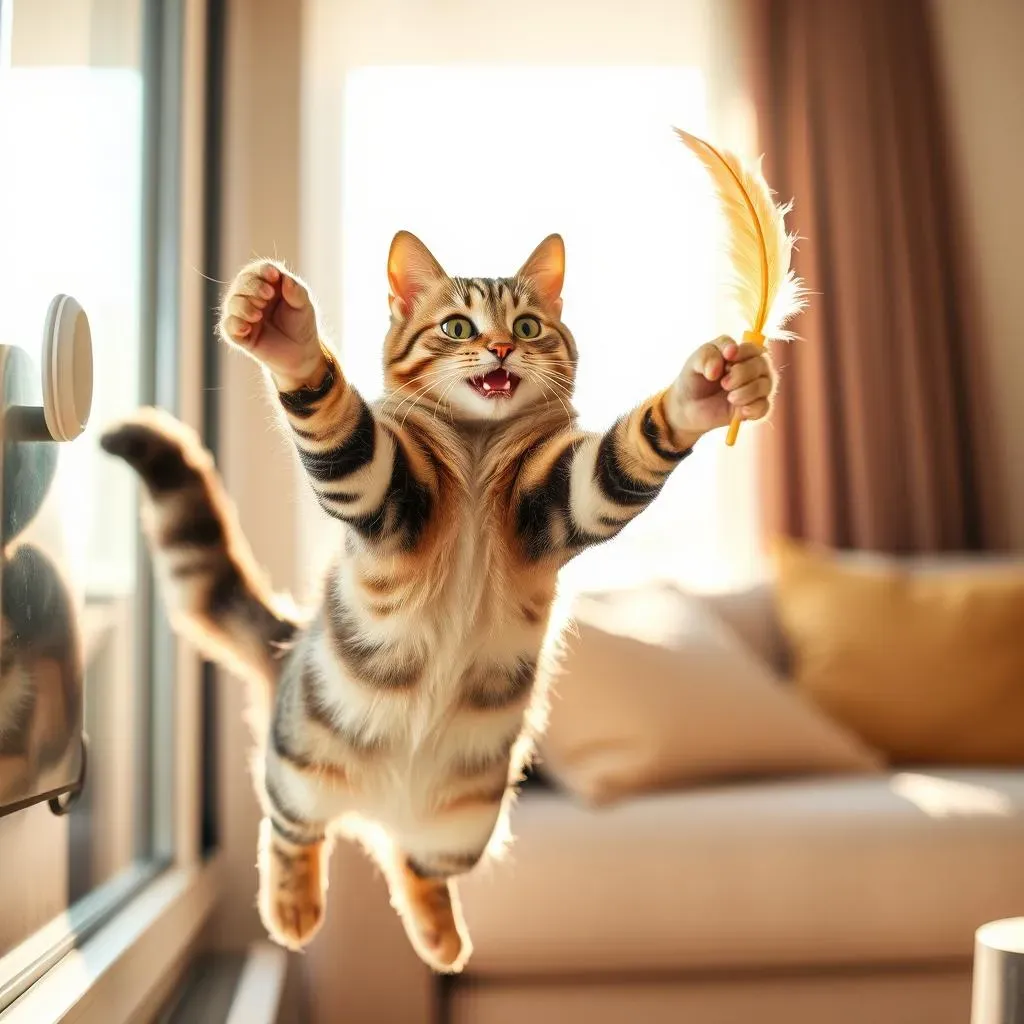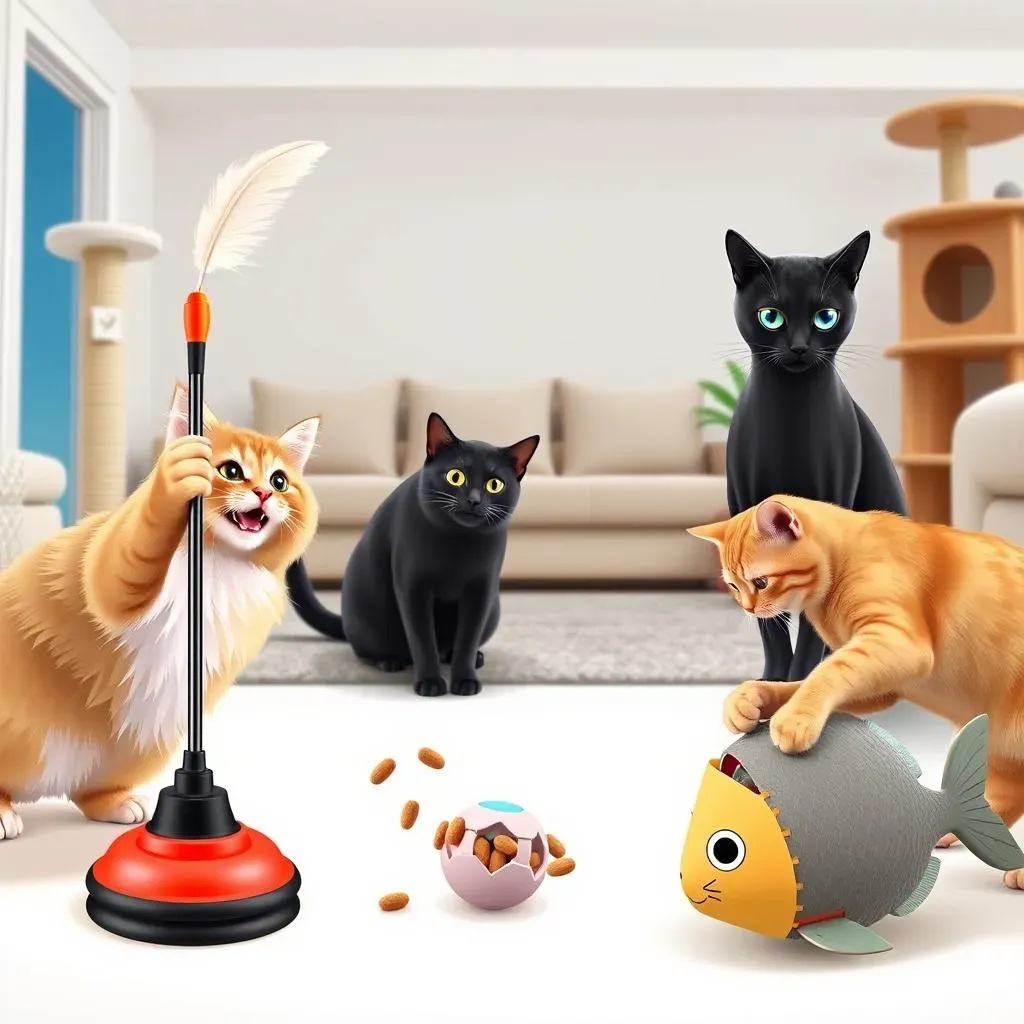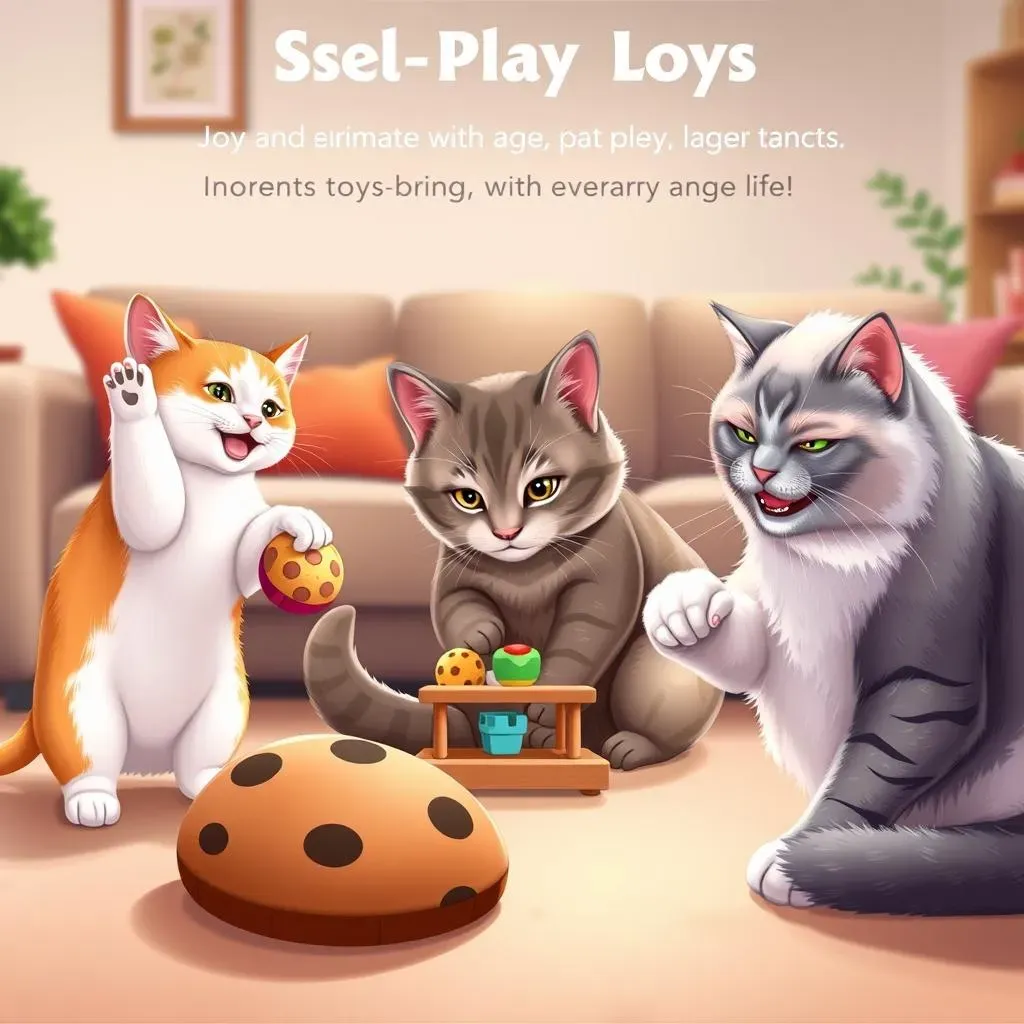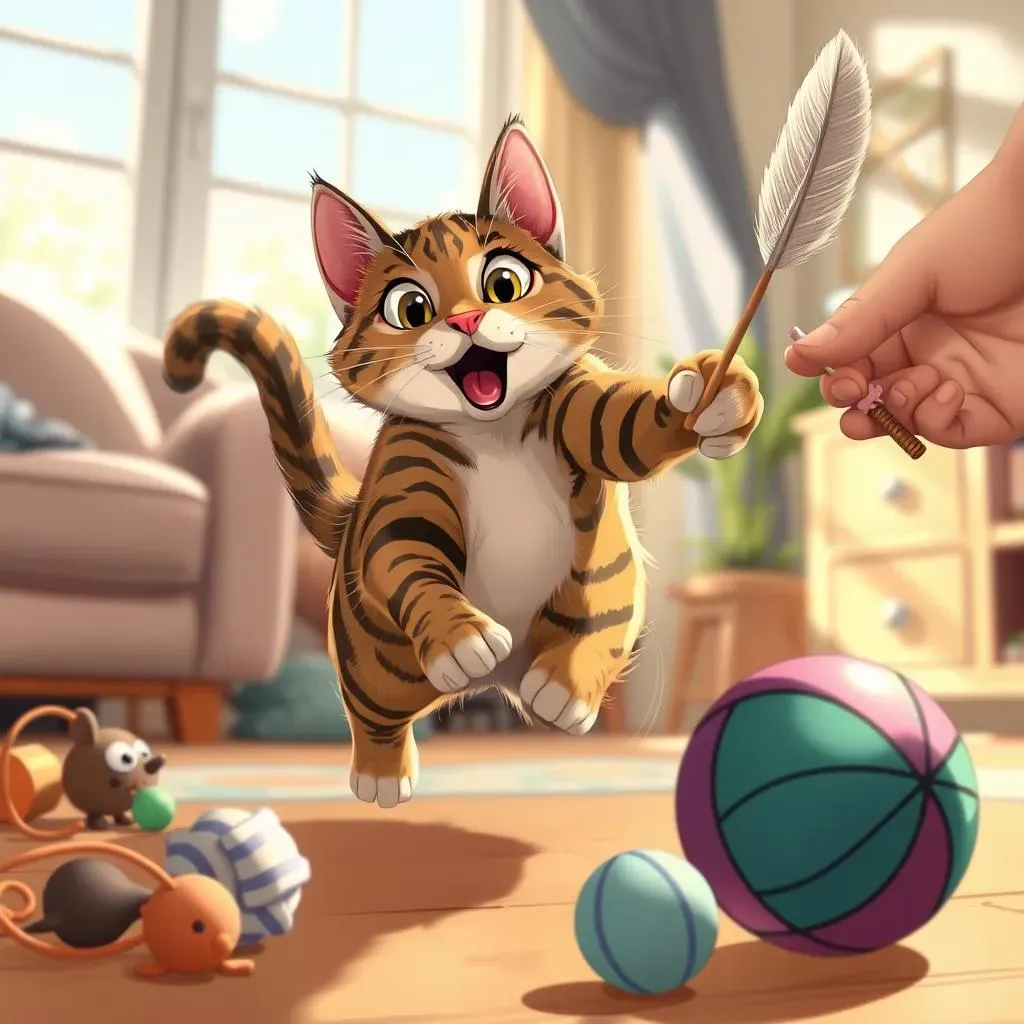Table of Contents
Ever feel guilty leaving your cat home alone all day? Or maybe you just need a few minutes of peace without a furry shadow demanding your attention? The secret to a happy, entertained cat lies in the world of best self play cat toys. These aren't just any toys; they're designed to engage your cat's natural instincts, providing hours of fun and mental stimulation, even when you're not around. This article is your ultimate guide to navigating the often overwhelming world of cat toys. We'll explore why self-play is so crucial for your cat's well-being, diving into the different types of toys that cater to various feline personalities. From simulating the thrill of the hunt to challenging their problem-solving skills, we'll uncover the top picks that will keep your kitty entertained and out of trouble. We'll also consider the unique needs of kittens versus senior cats, ensuring you choose the perfect toys for every stage of life. Plus, we'll decode some of those quirky cat behaviors, like why they dunk their toys in water or carry them around like prized possessions. So, get ready to transform your cat's playtime and say goodbye to boredom!
Why Self Play Cat Toys Are a MustHave for Happy Cats

Why Self Play Cat Toys Are a MustHave for Happy Cats
Let's face it, cats weren't designed to be couch potatoes. They're natural hunters with instincts that need to be satisfied, even if their "prey" is a laser pointer dot. Why self play cat toys are a must-have for happy cats boils down to this: they provide essential enrichment. Without appropriate outlets for their energy and natural behaviors, cats can become bored, stressed, and even destructive. Think scratching furniture, excessive meowing, or even aggression. Self-play toys offer a fantastic solution, allowing your feline friend to stalk, chase, pounce, and bat to their heart's content, all while you're busy conquering your own to-do list.
Top Types of Self Play Cat Toys: From Hunting to Puzzle Fun

Top Types of Self Play Cat Toys: From Hunting to Puzzle Fun
Hunting Instinct Toys: Unleash the Predator
If your cat loves to stalk, chase, and pounce, hunting instinct toys are a sure bet. Think of anything that mimics the movement of prey. Feather wands (left unattended, of course!), toy mice, and even laser pointers (use sparingly and never shine directly in their eyes!) fall into this category. The key is to choose toys that allow your cat to "capture" their prey, even if it's just for a moment. This satisfies their hunting sequence and prevents frustration. I once watched my cat, Whiskers, spend a solid hour batting around a toy mouse filled with catnip. It was like watching a tiny, furry ninja in action!
Kicker Toys and Cuddle Buddies: More Than Just a Hug
Kicker toys are larger toys that cats can grab onto with their paws and kick with their hind legs – mimicking the action of subduing prey. These are great for cats who love to wrestle and can provide a good workout. Soft plush toys can also provide comfort and security, especially for cats who were separated from their mothers at a young age. Some cats will even carry these toys around, groom them, and sleep with them. It's their way of nurturing and caring for their "babies".
Toy Type | Best For | Things to Consider |
|---|---|---|
Feather Wands (Self-Play Version) | Cats who love to chase and pounce | Ensure the wand is securely attached to a base and replace feathers regularly. |
Toy Mice | Cats with a strong hunting drive | Choose durable materials and avoid small parts that could be ingested. |
Kicker Toys | Cats who like to wrestle and kick | Look for toys that are long enough for your cat to grab and kick comfortably. |
Brain Game Toys: Challenge Their Intellect
Don't underestimate your cat's intelligence! Puzzle toys are designed to challenge their problem-solving skills and keep them mentally stimulated. These toys typically involve hiding treats or kibble inside a container that your cat has to manipulate to get the reward. There are various levels of difficulty, so you can start with something simple and gradually increase the challenge as your cat gets the hang of it. I've seen cats spend hours trying to figure out how to get treats out of a puzzle ball, and the sense of accomplishment they get when they finally succeed is palpable.
Kitten to Senior: Choosing the Right Self Play Cat Toys for Every Age

Kitten to Senior: Choosing the Right Self Play Cat Toys for Every Age
Kitten Playtime: Safety First!
Kittens are bundles of energy, but they're also delicate. When choosing best self play cat toys for kittens, safety is paramount. Avoid toys with small parts that could be swallowed, and opt for soft, lightweight materials. Think small plush mice, soft balls, and lightweight feather wands that are easy for them to bat around. It's also important to supervise kitten playtime to ensure they don't get into any trouble. Remember, kittens are still learning about the world, and they'll put just about anything in their mouths!
Introducing a variety of textures and sounds can also help kittens develop their senses. Crinkle toys, toys with bells, and even toys with different types of fabric can provide a stimulating experience. Just be sure to check the toys regularly for wear and tear and replace them as needed.
Adult Cat Preferences: Catering to Individual Tastes
As cats mature, their play preferences may change. Some cats may continue to enjoy chasing and pouncing, while others may prefer more sedentary activities like puzzle toys or simply batting around a catnip mouse. Pay attention to your cat's individual personality and choose toys that cater to their specific interests. Does your cat love to climb? Consider a cat tree with built-in toys. Does your cat enjoy scratching? A scratching post with dangling toys might be the perfect solution.
It's also important to rotate your cat's toys regularly to keep them interested. Cats can get bored with the same old toys, so introducing something new every few weeks can help keep them engaged. Try putting some toys away for a while and then bringing them back out – it'll be like they're getting a brand new toy!
"The key to a happy cat is understanding their individual needs and providing them with the appropriate enrichment." - Jackson Galaxy
Senior Cat Comfort: Gentle Stimulation
Senior cats may not have the same energy levels as kittens or younger adults, but they still need mental and physical stimulation. Opt for toys that are gentle on their joints and don't require a lot of strenuous activity. Soft plush toys, slow-moving laser pointers, and puzzle toys with large, easy-to-manipulate pieces are all good options. You can also try interactive toys that you can control from a distance, allowing your senior cat to participate in playtime without having to move around too much.
Comfort is also key for senior cats. Provide them with plenty of soft, comfortable places to rest and make sure their toys are easily accessible. A warm, cozy bed with a few favorite toys nearby can make a big difference in their overall well-being.
Life Stage | Toy Recommendations | Things to Consider |
|---|---|---|
Kitten | Soft plush toys, lightweight feather wands, crinkle toys | Safety, small parts, supervision |
Adult Cat | Variety of toys based on individual preferences, rotate toys regularly | Cater to hunting, climbing, and scratching instincts |
Senior Cat | Soft toys, slow-moving laser pointers, puzzle toys with large pieces | Gentle stimulation, comfort, accessibility |
Encouraging Play and Understanding Quirky Toy Behaviors in Cats

Encouraging Play and Understanding Quirky Toy Behaviors in Cats
So, you've got a mountain of toys, but your cat seems more interested in napping? Don't despair! Encouraging play and understanding quirky toy behaviors in cats is all about tapping into their natural instincts and creating a fun, engaging environment. Start with short, frequent play sessions – even just five minutes a few times a day can make a big difference. Introduce new toys regularly and demonstrate how to play with them. Drag a feather wand across the floor, toss a toy mouse in the air, or roll a puzzle ball around. The key is to get them excited and show them that playtime is rewarding. And most importantly, let them "catch" their toy! That final pounce and victorious grab is crucial for satisfying their hunting sequence. Without it, they might lose interest.
Ever notice your cat doing weird things with their toys? Like dunking them in their water bowl or carrying them around while yowling? These behaviors might seem strange, but they're often rooted in instinct. Some cats put their toys in water as a way of "storing" their prey or because they're attracted to the movement of the water. Others carry their toys around as a way of showing off their "kill" or because they're feeling territorial. Understanding these behaviors can help you better understand your cat's needs and provide them with the appropriate outlets for their natural instincts. I once had a cat who would only play with toys if I threw them into the bathtub first. Go figure!
"Play is not just fun and games for cats; it's essential for their physical and mental well-being." - Pam Johnson-Bennett
Keeping the Fun Alive: Finding the Perfect Self Play Cat Toys for Your Feline Friend
Ultimately, the quest for the best self play cat toys is about understanding your individual cat's unique personality and preferences. Experiment with different types of toys, observe their reactions, and don't be afraid to rotate them regularly to keep things fresh and exciting. By providing a variety of engaging and stimulating options, you'll not only banish boredom but also strengthen your bond with your feline companion, ensuring a happier, healthier, and more entertained kitty for years to come. Remember, a playful cat is a happy cat!